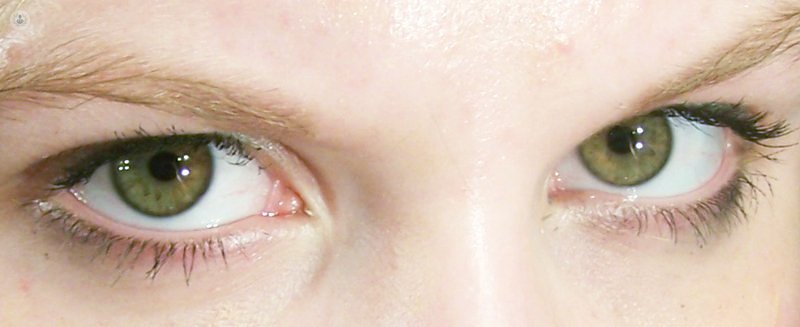The importance of diagnosing early Uveitis
Written by:Uveitis is the third leading cause of blindness in middle - aged people in developed countries. Therefore, it is essential to make a diagnosis and treatment as soon as possible.
Specialists Ophthalmology defined as inflammation uveitis affecting the uveal tract understood by the iris, ciliary body and choroid, as well as adjacent structures (vitreous, retina, optic nerve and vessels).
 Inflammation may be due to endogenous causes (systemic diseases contracted by a patient) or exogenous causes, the most common of which are infection (limited to the eyeball, or affect several organs). There is also another group called uveitis ophthalmologic whose cause is strictly limited to eye diseases.
Inflammation may be due to endogenous causes (systemic diseases contracted by a patient) or exogenous causes, the most common of which are infection (limited to the eyeball, or affect several organs). There is also another group called uveitis ophthalmologic whose cause is strictly limited to eye diseases.
There are different types of uveitis, such as anterior uveitis, intermediate, post and pan - uveitis. 90% of uveitis we see in the query are above (affecting the front of the eye), while the rest are from the back of the eyeball.
According to the etiology, the pattern is different ocular involvement. This helps us to approximate the cause of uveitis and prevents us asking unnecessary tests to reach a diagnosis.
Diagnosis and treatment of uveitis
The diagnosis and treatment of uveitis is very important since it is the third leading cause of blindness in middle age and working life in developed countries. 4% of them produce bilateral blindness and 4.5% produce blindness in one eye and severe loss of vision in the contralateral. This is because it presents with recurrent episodes of inflammation. The most important cause of vision loss is maintained Macular Edema developed by chronic inflammation.
Causes of uveitis
The main factors that can cause uveitis include:
- Idiopathic uveitis or without known cause.
- Uveitis autoimmune cause (ankylosing spondylitis, Crohn's disease, ulcerative colitis, psoriatic arthritis, Behcet's disease, nephritis interstitial tubule, Vogt-Koyanagi-Harada, drug hypersensitivity, vasculitis, Sjoegren syndrome, relapsing polychondritis, sarcoidosis, lupus syndrome Erythematosus, juvenile idiopathic arthritis, Kawasaki disease, multiple sclerosis.
- Infectious uveitis by viruses, bacteria, parasites and fungi
- Primarily eye uveitis (Heterochromic cyclitis, facogénicas, glaucomatociclíticas crisis, pars planitis, ophthalmologic retinocoroidopatías, Pigmented Epitheliopathic, presumed histoplasmosis syndrome, serpiginous chorioretinopathy, multifocal choroiditis, punctate inner chorioretinopathy, sympathetic ophthalmia
- Masking syndromes (tumors, vascular diseases and others ...)
Symptoms of uveitis
The most common symptoms of uveitis are pain, red eye, decreased vision. Sometimes the pain is more acute because it is accompanied by increased intraocular pressure, and sometimes can also occur threads or flies vision or blurred vision without accompanied by red eye or pain.
It is important to distinguish uveitis from conjunctivitis and other inflammatory conditions which do not affect the uvea, since early diagnosis and effective treatment avoids all permanent sequelae producing uveitis and get yourself maintain good visual acuity.
Treatment of uveitis
Treatment of uveitis is long, maintained and depend on the cause. The above immunological cause uveitis treated with topical steroids and pupil dilators. If accompanied by increased intraocular pressure drops are added antihypertensives.
In the intermediate or posterior uveitis we need to deal with systemic corticosteroids in most cases, either subtenon injections and / or immunosuppressive drugs for control of inflammation, and save systemic corticosteroids.
Reviews of these patients should be regularly and maintained throughout life and only rarely curative treatment is achieved, since they are generally not recurring inflammation that seek timely treatment cause severe vision disturbances
A special mention for Uveitis of children associated with Juvenile Idiopathic Arthritis (JIA) because they do not produce symptoms and are associated with serious permanent sequelae, so these children of low age with this diagnosis they should check frequently.
The diagnosis and treatment of this pathology is performed together in multidisciplinary units ophthalmologists and rheumatologists, and sometimes we need, depending on the cause of uveitis, the Pediatrics Unit and / or Neurology.


